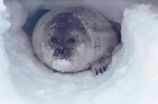(Press-News.org) Biologists and informaticists at Indiana University have produced one of the most extensive pictures ever of mutation processes in the DNA sequence of an organism, elucidating important new evolutionary information about the molecular nature of mutations and how fast those heritable changes occur.
By analyzing the exact genomic changes in the model prokaryote Escherichia coli that had undergone over 200,000 generations of growth in the absence of natural selective pressures, the team led by IU College of Arts and Sciences Department of Biology professor Patricia L. Foster found that spontaneous mutation rates in E. coli DNA were actually three times lower than previously thought.
The new research, which appears today in early editions of the journal Proceedings of the National Academy of Sciences, also notes that the mismatch repair proteins that survey newly replicated DNA and detect mistakes not only keep mutation rates low but may also maintain the balance of guanine-cytosine content to adenine-thymine content in the genome. Guanine-cytosine and adenine-thymine are the nitrogenous bases that bond between opposing DNA strands to form the rungs of the double helix ladder of DNA.
"We know that even in the absence of natural selection, evolution will proceed because new mutations get fixed at random in the genome," Foster said. "So, if we want to determine whether specific patterns of evolutionary change are driven by selection, knowledge of the expected pattern in the absence of selection is absolutely essential. Here we are defining the rate and molecular spectrum of spontaneous mutations while minimizing the ability of natural selection to promote or eradicate mutations, which allows us to capture essentially all mutations that do not cause the bacterium to die."
In a parallel mutation accumulation experiment using a strain defective in mismatch repair, in which the mutation rate was increased over 100-fold, the researchers analyzed nearly 2,000 mutations and found that these were strongly biased toward changing adenine-thymine base pairs to guanine-cytosine base pairs, the opposite of what is seen in the normal bacteria.
E. coli chromosome
"The molecular spectrum of spontaneous base-pair substitutions in almost all organisms is dominated by guanine-cytosine to adenine-thymine changes, which tends to drive genomes toward higher adenine-thymine content," Foster noted. "Because the guanine-cytosine content of genomes varies widely, there must be some selective pressure, or some non-adaptive mechanism, that can drive genomes back toward increased guanine-cytosine content."
The new research, co-authored by IU Bloomington School of Informatics and Computing associate professor Haixu Tang, Informatics predoctoral researcher Heewook Lee and Department of Biology postdoctoral researcher Ellen Popodi, demonstrates that mismatch repair is a major factor in the types of mutations that occur and in determining the base composition of the genome. Because the activity of mismatch repair can be influenced by the environment, another implication of this work is that the pattern of mutations could be used in forensics to help determine where a particular bacterial strain originated.
"By establishing baseline parameters for the molecular nature of spontaneous mutational change unbiased by selection, we can begin to achieve a deeper understanding of the factors that determine mutation rates, the mutational spectra, genomic base composition, how these may differ among organisms and how they may be shaped by environmental conditions," Foster said. "Since mutations are the source of variation upon which natural selection acts, understanding the rate at which mutations occur and the molecular nature of spontaneous mutational changes leads us to a fuller understanding of evolution."
INFORMATION:
The research took nearly two years to complete and was supported by a Multidisciplinary University Research Initiative Award from the U.S. Army Research Office.
New research presents most extensive pictures ever of an organism's DNA mutation processes
Pattern may be used in forensics to help determine where a particular bacterial strain originates
2012-09-18
ELSE PRESS RELEASES FROM THIS DATE:
Only half of adults say schools should take action when kids bully with social isolation
2012-09-18
ANN ARBOR, Mich. – U.S. adults repeatedly rate bullying as a major health problem for U.S. children. But a new poll from the University of Michigan shows adults have different views about what bullying behaviors should prompt schools to take action.
The University of Michigan C.S. Mott Children's Hospital National Poll on Children's Health recently asked a nationwide sample of adults what behaviors should be considered bullying and what behaviors should spur school officials to intervene.
The vast majority of adults (95 percent) say schools should take action if a student ...
Shrinking snow depth on Arctic sea ice threatens ringed seal habitat
2012-09-18
As sea ice in the Arctic continues to shrink during this century, more than two thirds of the area with sufficient snow cover for ringed seals to reproduce also will disappear, challenging their survival, scientists report in a new study.
The ringed seal, currently under consideration for threatened species listing, builds caves to rear its young in snow drifts on sea ice. Snow depths must be on average at least 20 centimeters, or 8 inches, to enable drifts deep enough to support the caves.
"It's an absolute condition they need," said Cecilia Bitz, an associate professor ...
Sex matters: Guys recognize cars and women recognize birds best
2012-09-18
Women are better than men at recognizing living things and men are better than women at recognizing vehicles.
That is the unanticipated result of an analysis Vanderbilt psychologists performed on data from a series of visual recognition tasks collected in the process of developing a new standard test for expertise in object recognition.
"These results aren't definitive, but they are consistent with the following story," said Gauthier. "Everyone is born with a general ability to recognize objects and the capability to get really good at it. Nearly everyone becomes expert ...
Study: Parole decisions affect rehabilitation incentives
2012-09-18
CHAMPAIGN, Ill. — Long mandatory minimum sentences or strong limits on judicial discretion can counter-productively reduce the incentives of prison inmates to engage in rehabilitative behavior, thereby raising recidivism rates, according to published research co-written by a University of Illinois economics professor.
Dan Bernhardt, the IBE Distinguished Professor of Economics at Illinois, says rehabilitation incentives are maximized when the lengths of prison sentences are neither too short, nor too long.
According to the paper, inmates with short prison sentences ...
International team of physicists makes discovery about temperature in convection
2012-09-18
(Santa Barbara, Calif.) –– An international team of physicists is working to ascertain more about the fundamental physical laws that are at work in a process known as convection, which occurs in a boiling pot of water as well as in the turbulent movement of the liquid outer core of the Earth. The team's new finding specifies the way that the temperature of a gas or liquid varies with the distance from a heat source during convection. The research is expected to eventually help engineers with applications such as the design of cooling systems, for instance, in nuclear power ...
UCI researchers find cause of chemotherapy resistance in melanoma
2012-09-18
Irvine, Calif., Sept. 17, 2012 — Researchers with UC Irvine's Chao Family Comprehensive Cancer Center have identified a major reason why melanoma is largely resistant to chemotherapy.
UCI dermatologist Dr. Anand Ganesan and colleagues found a genetic pathway in melanoma cells that inhibits the cellular mechanism for detecting DNA damage wrought by chemotherapy, thereby building up tolerance to cancer-killing drugs.
Targeting this pathway, comprising the genes RhoJ and Pak1, heralds a new approach to treating the deadly skin cancer, which claims nearly 10,000 U.S. lives ...
Summer Geoscience from GSA Bulletin
2012-09-18
Boulder, Colo., USA – GSA Bulletin papers posted online from 20 July through 14 September 2012 elaborate on geoscience from Algeria, Mexico, Spain, Turkey, Nova Scotia, Switzerland, New Mexico, and the U.S. Rocky Mountains. Topics include tectonics, mineral formation, the Moho, age dating using zircon crystals, the Code of Stratigraphic Nomenclature, atmospheric CO2, and early animal evolution.
GSA Bulletin articles published ahead of print are online at http://gsabulletin.gsapubs.org/content/early/recent. Representatives of the media may obtain complimentary copies of ...
Mayo Clinic researchers identify new enzyme to fight Alzheimer's disease
2012-09-18
JACKSONVILLE, Fla. — An enzyme that could represent a powerful new tool for combating Alzheimer's disease has been discovered by researchers at Mayo Clinic in Florida. The enzyme — known as BACE2 — destroys beta-amyloid, a toxic protein fragment that litters the brains of patients who have the disease. The findings were published online Sept. 17 in the science journal Molecular Neurodegeneration.
Alzheimer's disease is the most common memory disorder. It affects more that 5.5 million people in the United States. Despite the disorder's enormous financial and personal ...
Cystic fibrosis disrupts pancreas two ways in CF-related diabetes
2012-09-18
A new University of Iowa study suggests there are two root causes of a type of diabetes associated with cystic fibrosis (CF). The findings, which already have sparked a clinical trial, may guide development of new treatments or even help prevent diabetes in patients with CF.
Almost half of patients with CF will develop diabetes by age 30 and almost one quarter will develop it in their teens. In addition to the health problems caused by high blood sugar, diabetes also worsens lung disease and increases the risk of dying for people with CF. However, the underlying cause ...
Antibiotic-resistant pathogens persist in antibiotic-free pigs
2012-09-18
Researchers from North Carolina State University have found identical strains of antibiotic-resistant Campylobacter coli (C. coli) in both antibiotic-free (ABF) and conventionally raised pigs. This finding may indicate that these antibiotic-resistant pathogens can persist and thrive in the environment, regardless of antimicrobial usage by pork producers.
Dr. Siddhartha Thakur, assistant professor of population health and pathobiology, had previously found that antibiotic-resistant C. coli, a leading cause of foodborne illness in the U.S., was present in both ABF-certified ...
LAST 30 PRESS RELEASES:
This new understanding of T cell receptors may improve cancer immunotherapies
A new fossil face sheds light on early migrations of ancient human ancestor
A new immunotherapy approach could work for many types of cancer
A new way to diagnose deadly lung infections and save lives
40 percent of MRI signals do not correspond to actual brain activity
How brain-inspired algorithms could drive down AI energy costs
Gum disease may be linked to plaque buildup in arteries, higher risk of major CVD events
Contrails are a major driver of aviation’s climate impact
Structure of dopamine-releasing neurons relates to the type of circuits they form for smell-processing
Reducing social isolation protects the brain in later life
Keeping the heart healthy increases longevity even after cancer
Young adults commonly mix cannabis with nicotine and tobacco
Comprehensive review illuminates tau protein's dual nature in brain health, disease, and emerging psychiatric connections
Book prepares K-12 leaders for the next public health crisis
Storms in the Southern Ocean mitigates global warming
Seals on the move: Research reveals key data for offshore development and international ecology
Sports injuries sustained during your period might be more severe
World's first successful 2 Tbit/s free-space optical communication using small optical terminals mountable on satellites and HAPS
Can intimate relationships affect your heart? New study says ‘yes’
Scalable and healable gradient textiles for multi‑scenario radiative cooling via bicomponent blow spinning
Research shows informed traders never let a good climate crisis go to waste
Intelligent XGBoost framework enhances asphalt pavement skid resistance assessment
Dual-function biomaterials for postoperative osteosarcoma: Tumor suppression and bone regeneration
New framework reveals where transport emissions concentrate in Singapore
NTP-enhanced lattice oxygen activation in Ce-Co catalysts for low-temperature soot combustion
Synergistic interface engineering in Cu-Zn-Ce catalysts for efficient CO2 hydrogenation to methanol
COVID-19 leaves a lasting mark on the human brain
Scientists use ultrasound to soften and treat cancer tumors without damaging healthy tissue
Community swimming program for Black youth boosts skills, sense of belonging, study finds
Specific depressive symptoms in midlife linked to increased dementia risk
[Press-News.org] New research presents most extensive pictures ever of an organism's DNA mutation processesPattern may be used in forensics to help determine where a particular bacterial strain originates





